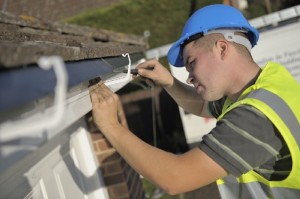What is Roofing Resin?
This entry was posted on Mar 7, 2014 by speedy-bedRoofing resin is a commercial product most commonly used in the building or repairing of fibreglass flat roofs, although it can also be used in a similar fashion on pitched roofs. When bought the resin is a low viscosity liquid but when mixed with an appropriate catalyst it quickly hardens to help form a waterproof, fire retardant roofing structure.
So how is roofing resin used?
The exact method of use for roofing resin depends on the brand purchased however in general terms the following method is used;
Firstly the resin is mixed with the accompanying catalyst as described in the product instructions. The catalyst causes the resin to harden over the course of a few hours, meaning it should only be added when you are ready to lay the resin.
Once mixed, the resin/catalyst mixture should be generously applied to the surface of your roofing substrate, making sure that the edges are covered adequately and there are no air bubbles or thinly laid areas. You should also ensure that enough resin has been applied to compensate for any seepage into your roofing substrate that may occur.
While the resin is still wet you should lay your fibreglass matting squares onto the surface. These squares will quickly soak up the resin mixture so you’ll need to add more resin soon after adding the matting. Keep adding your resin until the matting is completely soaked through and there is a thin layer on top of the matting.
Next, you need to ensure that any air bubbles or imperfect areas are forced out of the resin before it hardens. You can use a fin roller to do this, working from the centre outwards. Leaving air bubbles in your resin will decrease its protective nature and could potentially lead to leaks and cracks in the future.
If a stronger roof is required you can add a second layer of fibreglass matting and more resin on top. Obviously this will cost a bit more but for structures that are subjected to heavy foot traffic e.g. balconies, flat rooftops etc, it is worth paying the difference.When your roofing resin is dry to the touch you’ll need to apply your top coat mix. The top coat adds UV stability to your roof and helps to ensure a waterproof seal.
In simple terms then roofing resin is used in conjunction with fibreglass matting and a hardy top coat mix to ensure any flat roof is waterproof and protected from the elements. What’s more, most resins are slightly flexible even when hardened and allow roofing surfaces to expand and contract as outdoor temperatures rise and fall.
As with any other commercial product there are numerous types of roofing resin available on the market. For helpful advice when choosing yours contact us today.

